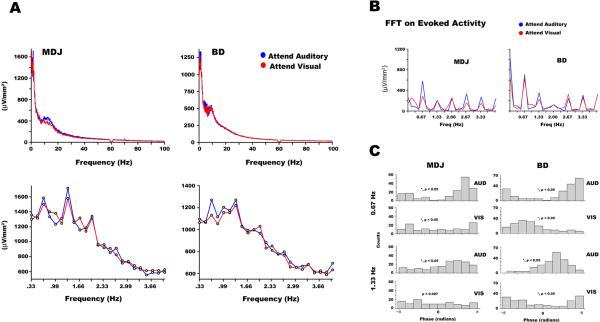Figure 3. Spectral analysis using FFT.
(A) FFT spectrum (on a single-trial basis) during attend-auditory and attend visual conditions at Electrode E14 (MDJ) and Electrode E10 (BD). The lower graphs show spectral peaks evident at 0.67 Hz, as well as, at its 2nd and 3rd harmonics in both attention conditions and both subjects. (B) A Six-second FFT spectrum (on the averaged waveform) centered on the onset of the auditory stimulus during attend-auditory and attend visual conditions at Electrode E14 (MDJ) and Electrode E10 (BD). The graphs show the greatest peak in the spectrum range 0 – 4 Hz at 0.67Hz (i.e. the first harmonic). In addition, the spectrum shows a significant drop in power in the second harmonic (i.e. 1.33 Hz) in both participants. (C) Histograms illustrating the phase distribution of the 0.67 and 1.33 Hz frequency components at 0ms for each attention condition in the same electrodes. In both participants, significantly non-uniform phase distributions were measured for both attention conditions at the 1st and 2nd harmonics, and the circular means differed significantly between attention conditions.

